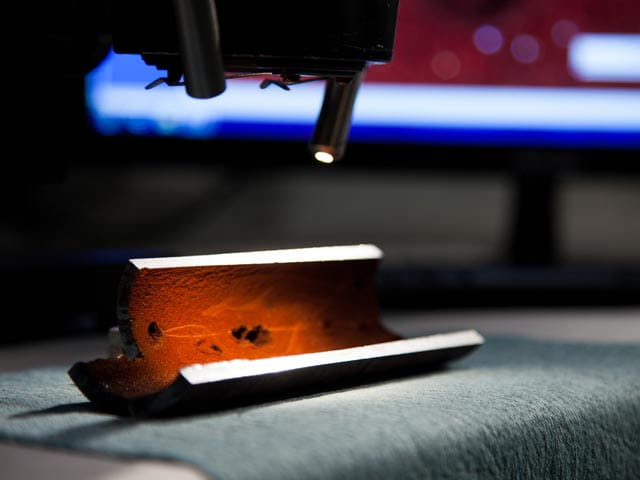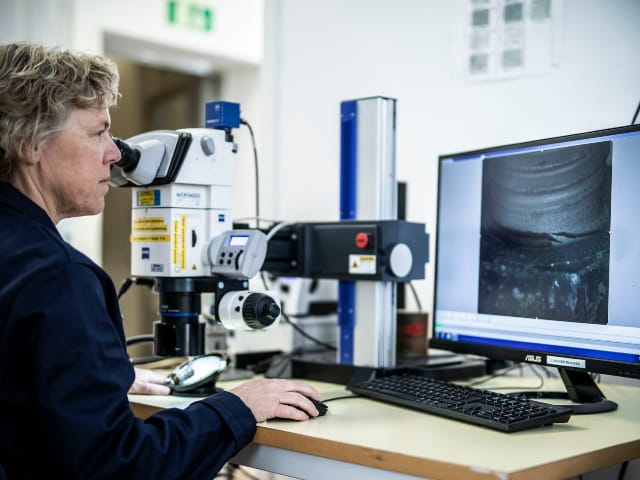Mechanical Failure Analysis Storytelling
“I have a broken bolt that experienced failure and would like to have it tested. How do you determine what happened?”
We often receive RFQs similar to the above nature, which have an obvious query but an ambiguous request. Unlike other tests performed here at Element, mechanical failure analysis requires a different approach – the nature of its existence relies on story building. In our previous blog post, we describe three benefits of performing failure analysis. For this one, we’ll focus on the first benefit of root cause determination, how Element approaches these types of analyses, and what the client can do to minimize stories that leave room for interpretation.
Some stories are short and simple—they have a beginning, middle, and end. Others are like suspense novels – complex plots, multiple characters, many series of events, and sometimes may lack “The End”. When we receive an initial RFQ for failure analysis, we have basic questions that will help us determine how complex the story is. These include:
1. Character
a. Description (and pictures or videos!) of the part, interfacing parts, and overall machine/instrument.
b. Intended service life of the part vs. actual life.
c. Type of material and process/manufacturing background.
2. Setting
a. In what environment did the failure occur? (Conditions, loads, temperature, usage, cycling, pressure, chemical contact, lubricants)
b. Is the part on-site or is it at a customer’s site?
3. Plot
a. Describe any events leading up to the incident (changes in manufacturer or manufacturing process, changes in material, is it the first failure of its kind, or an ongoing failure?).
b. List any observations such as isolated events (lot numbers, locations, specific uses).
At this point, the story is only half finished, and that’s where Element comes in. Our engineering team will request both the failed part, whether it be a bolt, fastener, or screw, and a new or unused one for comparison, along with any interfacing parts needed to fit pieces together. With this information, we’ll then be able to determine the most efficient approach to determining what happened. Oftentimes, we can’t rely on one standard way to go about the investigation. With a gambit of tests at our disposal, running different combinations of tests (which can be few or many) will help us provide the unknown part of the story:
4. Conflict
a. Macroscopic examinations of all fracture surfaces and identify any anomalies while noting all observations (lower magnifications). Typically from this type of examination, we get an overview of what type of failure occurred and see what the rest of the parts look like. E.g.Visual descriptors.
b. Fractographic examination of all fracture surfaces for more in-depth examination (higher magnifications). This helps to clarify what macroscopy can’t tell us. We scan surfaces by SEM to further determine the type of failure and note any microscopic anomalies as well. If there are contaminants on either the surface or clearly seen within the fracture, we can run a chemical ID by EDS as well.
c. Hardness testing of the surface or cross-section core. A quick method to determine material flaws (wrong material), insufficient processing (improper tempering or lack of homogeneity), or get an idea of the material strength.
Depending on what can be gathered from the above inspections, we can generally break down the likely cause of failure to be a material flaw, manufacturing defect, or improper use. While we don’t want to point out the obvious, we want to eliminate any possible causes of failure as deemed necessary. Since Element is known for “breaking stuff” and we have a hunch toward one particular cause, we’ll ask for the go-ahead on part destruction. Then, we’ll perform a microscopic evaluation to confirm microstructures, forging defects, internal or secondary cracks, etc.
As a third-party testing laboratory, Element approaches mechanical failure analyses unbiasedly. The success of a failure analysis depends largely on the build-up of the plot; however with insufficient plot development, only the ending – the failure of the fastener - is known for sure.
To learn more about mechanical failure analysis, or if you have any questions, contact our team today.
Find related Resources





